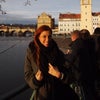The Jewish Museum Berlin (Jüdisches Museum Berlin), in Berlin, Germany, covers two millennia of German Jewish history. It consists of two buildings. One is the old Kollegienhaus, a former courthouse, built in the 18th century. The other, a new addition specifically built for the museum, designed by world-renowned architect Daniel Libeskind. This was one of the first buildings in Berlin designed after German reunification. The museum opened to the public in 2001.
Princeton professor W. Michael Blumenthal, who was born near Berlin and was later President Jimmy Carter’s Secretary of the Treasury, has been the director of the museum since December 1997.
, built in 1737]] The original Jewish Museum in Berlin was founded on Oranienburger Straße in 1933. The Nazi regime closed it in 1938, and it wasn’t until 1975 that an "Association for a Jewish Museum" formed to resurrect the old museum. After an exhibition on Jewish history opened there in 1978, the Berlin Museum, which chronicled the city’s history, established a Jewish Department. Soon thereafter, discussions for constructing a new museum dedicated to Jewish history in Berlin began.
In 1988, the Berlin government announced an anonymous competition for the new museum’s design. A year later, Daniel Libeskind's design was chosen for the commission for what was then planned as a “Jewish Department” for the Berlin Museum. While other entrants proposed cool, neutral spaces, Libeskind offered a radical, zigzag design, which earned the nickname "Blitz."
On July 3, 1991, the Senate of Berlin voted to scrap the Jewish Museum. Financial pressures from unforeseen unification expenses and a serious bid for Berlin to host a future Olympics prompted the Senate's decision to otherwise reallocate the approximately $50 million. The Libeskinds, however, alerted the international press. Influential political and cultural figures, including Benjamin Netanyahu, Teddy Kollek, Jacques Lang, and Marvin Hier, expressed their support for the museum. Due to these pressures, in October 1991, the Parliament of Berlin overruled the Senate and work on the Jewish Museum continued.
Construction on the new extension to the Berlin Museum began in November 1992. The empty museum was completed in 1999 and attracted over 350,000 people before it was filled and opened on September 9, 2001.
The museum adjoins the old Berlin Museum and sits on land that was both East and West Berlin before the Berlin Wall fell. The Museum itself, consisting of about 161,000 square feet (15,000 square meters), is a twisted zig-zag and is accessible only via an underground passage from the Berlin Museum's baroque wing. Its shape is reminiscent of a warped Star of David. A "Void," an empty space about 66 feet (20 m) tall, slices linearly through the entire building. Menashe Kadishman's Shalechet (Fallen leaves) installation fills the void with 10,000 coarse iron faces. An irregular matrix of windows cuts in all orientations across the building's facade. A thin layer of zinc coats the building's exterior, which will oxidize and turn bluish as it weathers.
A second underground tunnel connects the Museum proper to the E.T.A. Hoffmann Garden, or The Garden of Exile, whose foundation is tilted. The Garden's oleaster grows out of reach, atop 49 tall pillars.
The final underground tunnel leads from the Museum to the Holocaust Tower, a 79 foot (24 m) tall empty silo. The bare concrete Tower is neither heated nor cooled, and its only light comes from a small slit in its roof.
Similar to Libeskind’s first building, the Felix Nussbaum Haus, the museum consists of three spaces. All three of the underground tunnels, or "axes," intersect and may represent the connection between the three realities of Jewish life in Germany, as symbolized by each of the three spaces: Continuity with German history, Emigration from Germany, and the Holocaust.
The Jewish Museum Berlin was Daniel Libeskind’s first major international success.
In his research for the project, Libeskind read the Gedenkbuch, or Memorial Book, which lists all the Jews murdered in the Holocaust. The report which he filed in the original design competition borrowed the form of the Gedenkbuch.
Libeskind, a musician himself, took inspiration from music and considered the museum the final act of Arnold Schoenberg's unfinished opera, Moses und Aron . Walter Benjamin's One Way Street's 60 sections determined the number of sections that comprise the museum's zigzag section.





